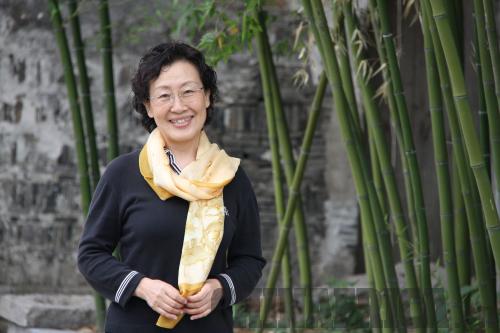|
 |
|
COURTESY OF REN XIAOPING |
For most Chinese people, Namibia is a distant and unknown land. However, the pearl of Southern Africa is special and unforgettable to Mrs. Ren Xiaoping, 63 years old, who held the position of Extraordinary and Plenipotentiary Ambassador of China to Namibia from November 2007 to May 2010.
Wonderland
Ren gets excited when she talks about Namibia. "Namibia is really beautiful," she exclaimed during an interview with ChinAfrica. "The west of the country is geographically surrounded by the Atlantic Ocean, and has a coastline of about 1,600 km, which offers a wonderful seascape. As the Benguela Current flows along the coast of Namibia, there is rich plankton in the near waters that help form the largest seal colony in the world."
Ren was so enthusiastic about the sights in Namibia that many people took it for granted that she was a government official of the country in charge of tourism on many occasions.
"The beauty of Namibia is truly unique but only a few Chinese know it," said Ren. According to the former ambassador, because of difficulties in transportation (the lack of direct flights between China and Namibia, for example) and the lack of knowledge about Namibia, the number of Chinese tourists who tend to choose to visit Namibia is quite small, although the country has been open to Chinese tourists since late 2005.
However, according to Ren, bilateral tourist exchanges between the governments and peoples of Namibia and China have been increasing in recent years.
One good example is the experience of Jerry Xu, a Chinese man whose nickname is Maomao Youshijie (a kitten travelling around the world). Xu made a personal trip to Namibia and published his photos on tianya.com, one of the most popular Chinese online forums. As of the end of September 2012, he already has 33,000 fans on the Internet. In 2008, Xu published his own book, The Pretty Namibia and put it on his personal website (http://www.jerry-xu.com/index.asp) to promote the country to Chinese tourists.
"There will certainly be more and more Chinese who will visit Namibia in the future," said Ren.
Respecting tradition
Ren has a great passion for Namibia's traditional art. She is particularly impressed by the fact that locals respect their traditions in an intelligent way.
"The tourism industry is very developed there and Namibia is a popular choice for many western tourists," said Ren. "One of the main reasons for this is that there are very beautiful and well-equipped lodges with traditional decorations. For example, you can find the walls of a modern hotel decorated with delicate and handmade grass-woven trays and rooms equipped with lamps made with buffalo leather."
The Chinese diplomat also particularly likes paintings on animal leather, which are created with a soldering iron. Common patterns may vary from deserts, grasslands and seascape to wildlife. Ren loves this style of artwork and collects pieces by Henry Very, a famous Namibian artist.
Admiring the differences
Ren was stunned the first moment she arrived in Namibia: The country covers an area of 824,600 square km, but only has 2 million inhabitants.
"That means there are only two people per square km in Namibia. But in Jiangsu Province, which is not even the most populated region in China, there are more than 700 people per square km," said Ren.
Apart from the difference in population between the two countries, Ren stressed that ideological differences arise especially when Chinese companies employ local Namibian workers.
"Many business leaders complained that Namibian employees often fail to comply with the work attendance system," said Ren. "I think it is because the Chinese appreciate diligence and efficiency at work while Namibians enjoy relaxing. Another reason is that there are some Western forces perpetuating the value of rights but under-emphasizing responsibility and obligation."
Despite the differences, the former Chinese Ambassador has not forgotten the friendly relations between China and Namibia, especially when she had a car accident in the wilderness of the country.
"People were warm and helped us when they learned that we were Chinese. I always found that fraternity among ordinary Namibians," said Ren. According to her, the unpretentious nature of people is the greatest charm of Namibia. |